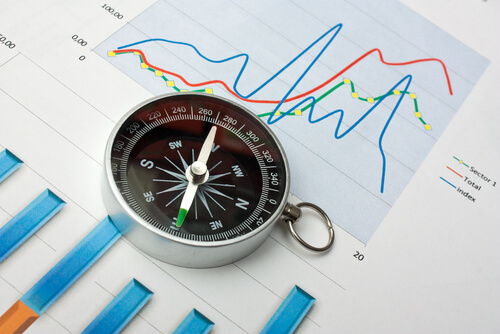
WEALTH PATH
Friday, November 19
The economic indicators affecting investments
Economic indicators are data used to evaluate the overall health of the economy. Understanding how the economy works alongside the financial market helps investors better assess investment opportunities. These are used by investors to determine the current situation of an economy and predict future possibilities. Some of these indicators include:
- Gross Domestic Product (GDP): GDP is the market value of all final goods and services produced in a country within a specific period. It is the primary indicator of a country’s health. GDP is of two types – Nominal, which is GDP calculated with inflation, while Real, is GDP calculation that adjusted for inflation. Real is deemed the most accurate calculation and that is what we would deal with in this article. GDP affects how the financial market behave, especially the stock market. The expansion of a country's GDP indicates that there is an increase in the level of economic activity as the production of goods and services increases. This means that the economy is growing. A reduction in the GDP indicates there is a decrease in the level of economic activities which will result to a slowdown of the economy. The GDP growth rate of a country can be used to determine the level of growth companies operating in that country are likely to experience. This growth usually translates into higher company earnings, and this tends to increase stock prices.
- Inflation: Inflation is the increase in the general price level of goods and services in an economy. It leads to a decrease in the value of money, and this affects the real returns on investments. Inflation has effects on different types of investments. For example, fixed income instruments are debt securities that pay fixed returns in the form of interest payments. This means that the rate of return of such investments will not increase as inflation increases, thus leading to a decline in value. Inflation may not cause excessive amounts of losses to stocks. This is because the earnings of companies may also increase as inflation increases. This increased earnings leads to an increase in stock prices and returns.
- ???Purchasing Manager’s Index (PMI): PMI shows the current direction of economic trends in a given sector. It is based on survey responses which indicate the amount of business activities that occurred the current month in comparison with the previous month. It is one key variable used to assess business conditions in an economy. The two major types are the manufacturing and services PMI. Investors use this index to analyse the health of the manufacturing and services sectors, and the stocks affected by it. When the business activities in a sector slows down, it is likely due to reduced demand, and this can indicate difficulties in a sector. The PMI is a number which ranges from 0 to 100. If the PMI is above 50, it indicates a general expansion in the manufacturing/ non-manufacturing sector. This expansion means that the sector is growing as there is an increase in its business activities. A PMI below 50 indicates a contraction in the sector and this means that there is a decrease in its business activities. A PMI of 50 indicates the sector is neither expanding nor contracting.
- Interest Rates: This is the amount a lender charges for lending their assets. This is usually a percentage of the principal. It is also known as the cost of borrowing. Interest rate affects investments differently. For example, there is an inverse relationship between interest rates and bonds – When interest rates fall, bond prices increase. Investors begin to seek fixed rate opportunities, as bond returns may be more appealing when interest rates are low. While in the stock market, higher interest rates lead to a fall in stock prices. High interest rates discourage businesses from borrowing. This in turn, could lead to a fall in a company’s earnings and cause its share prices to fall.
- Current Account Deficit: The current account of a country is the record of all its international transactions in goods and services. The balance of this account is found by taking the difference between exports and imports of goods and services. A current account deficit occurs when value of imports in a country exceeds its exports. This could in turn lead to a depreciation of the country’s currency. The depreciation of a currency is the decrease in the value of the currency against other currencies. This makes exports cheaper and more competitive in the international market and imports become more expensive. This can lead to high inflation and eventually high interest rates which could in turn lead to a fall in the prices of investments.
- Employment Indicators: The productivity of the labour force is important for economic growth and these indicators provide information about the employment situation of an economy. Investors use these to help predict the productivity of an economy or a sector. A rise in the unemployment rate means there is an increase in idle resources, and this generally implies lower productivity. Low productivity reduces a company’s earnings, and this leads to a fall in its stock price.
These indicators help you as an investor understand how investments are affected by economic activities. It could also help investors predict asset prices especially in the stock market. However, determining the investments best suited for you requires more. Speaking to a portfolio manager or getting financial advice from a professional is advisable.



.jpg)
.jpg)
.jpg)